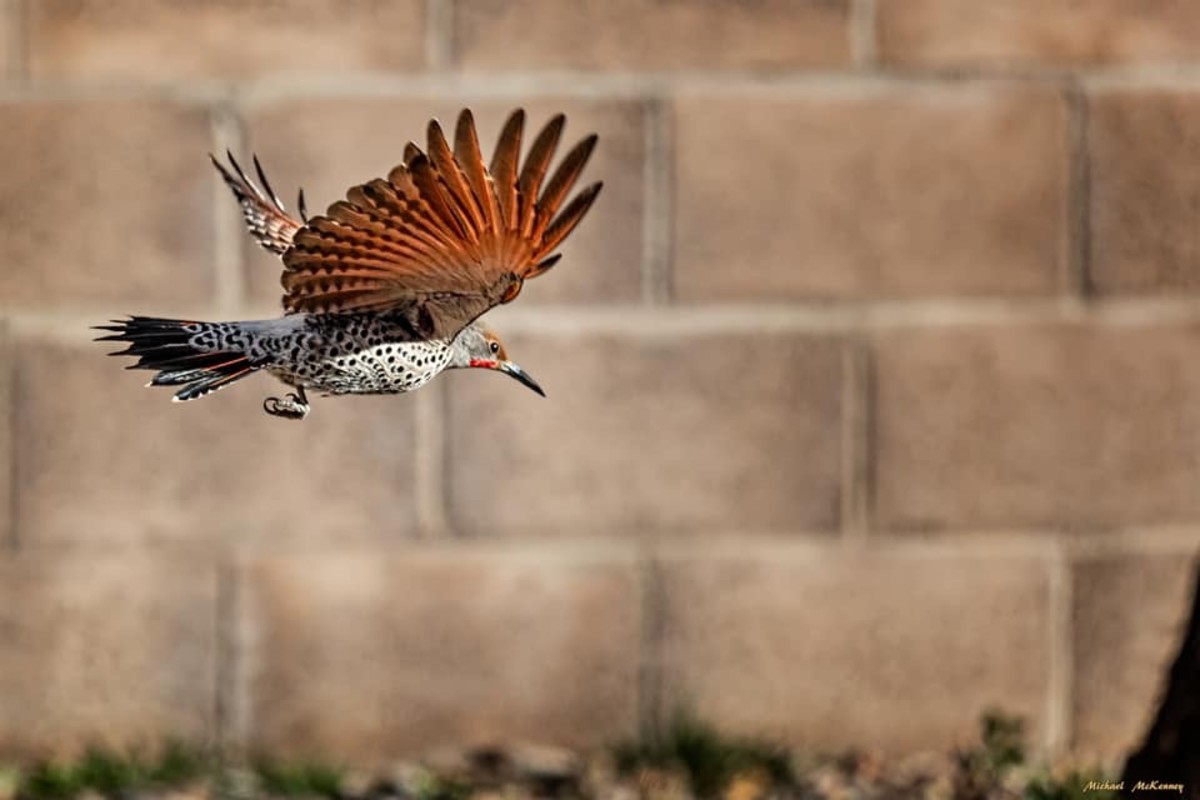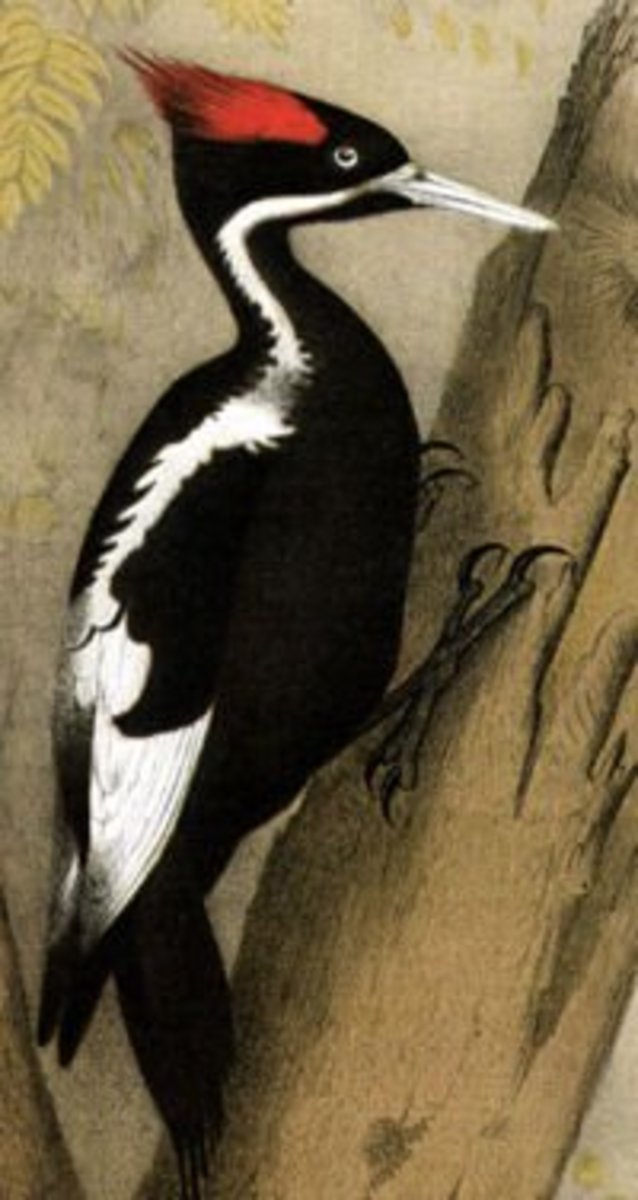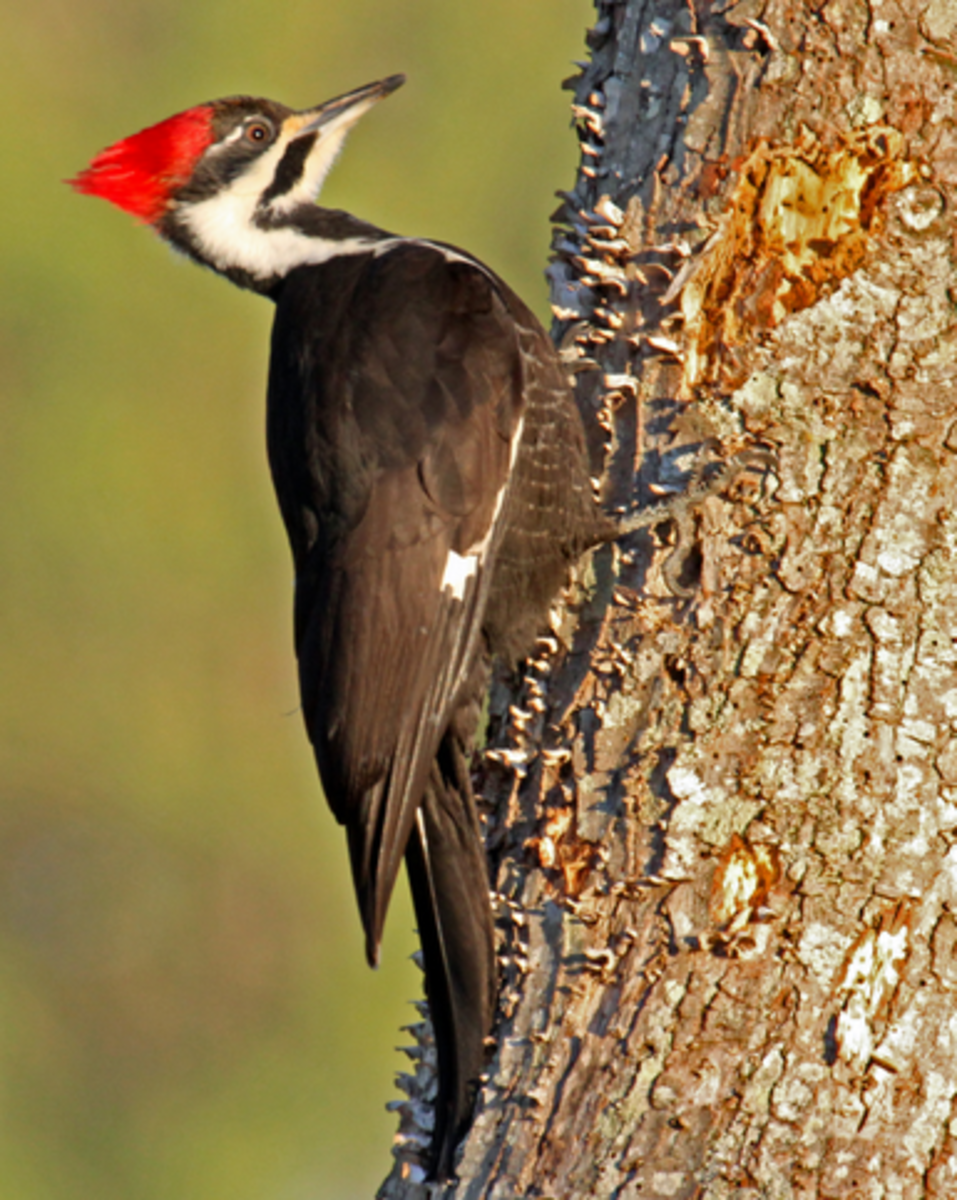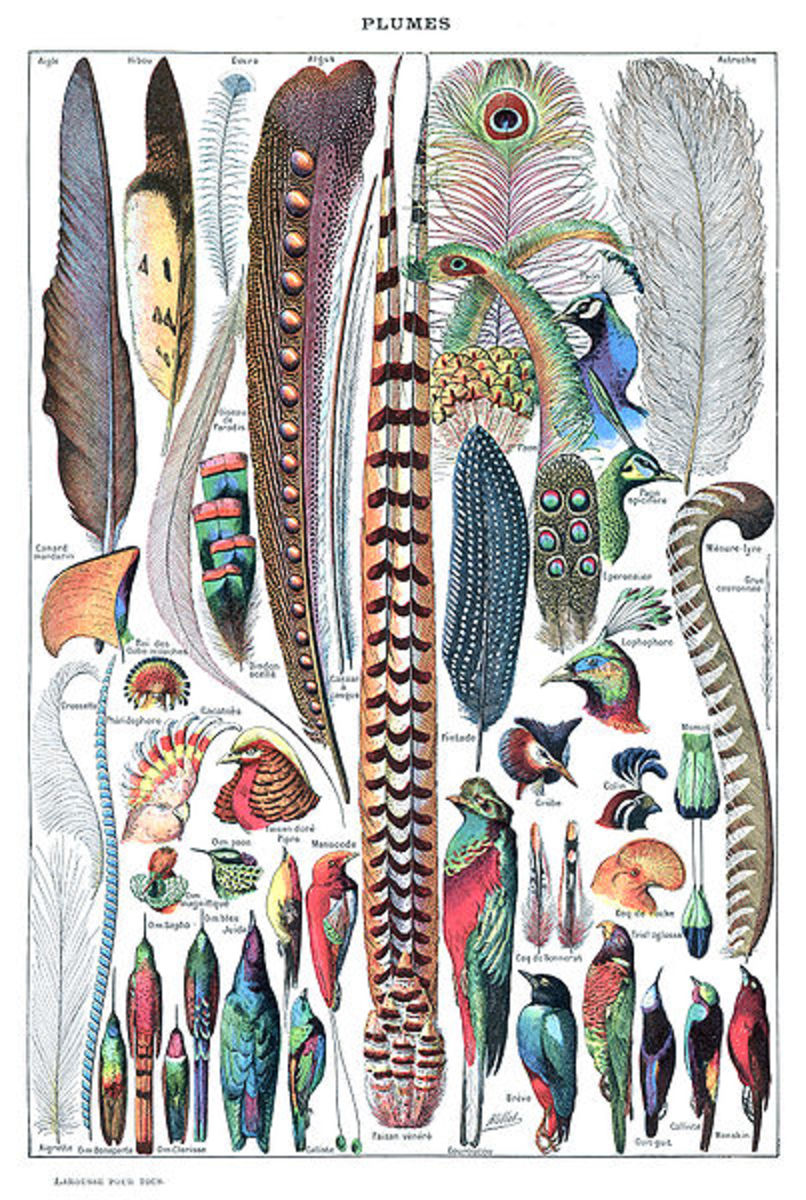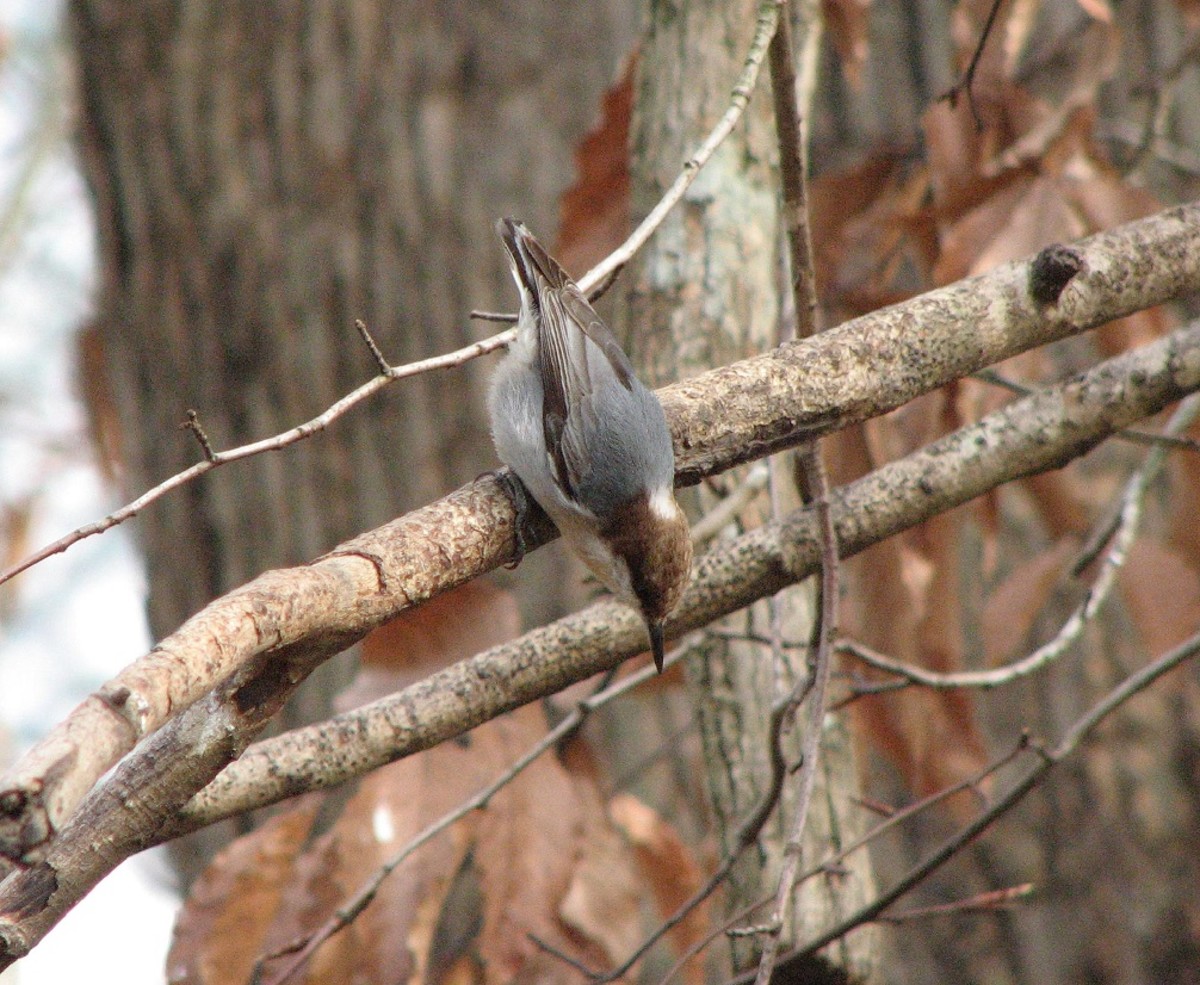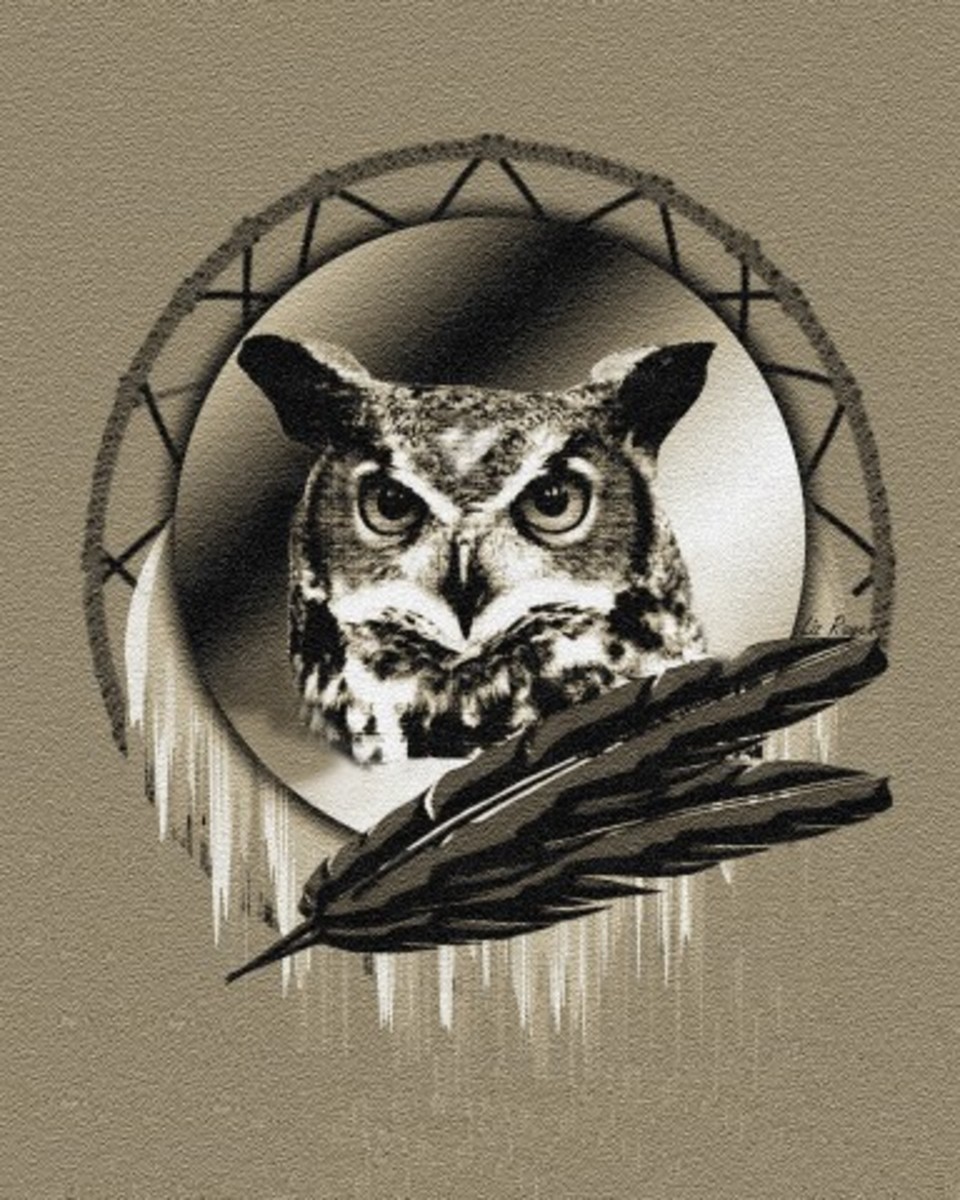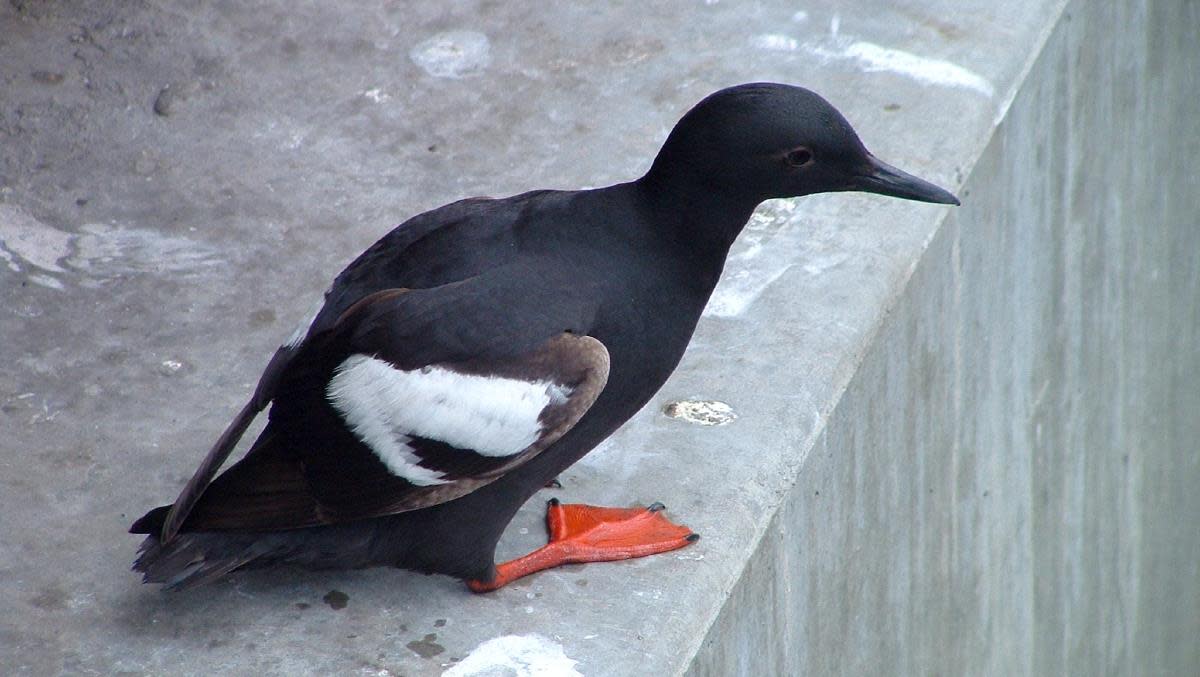The Grouse That Was A Mother Flicker
So my son Klaus and I spent a few hours outback waiting, and sure enough, we did spot the "grouse" quickly dart out of the hole.
For many years now, when I'd see this yellow-winged bird retreat I thought for some reason, it was a grouse. I think it was because, when I spent some quality hiking time with my Uncles Gregg and Dean as a boy, they pointed out that a retreating bird along the trail was often a grouse. Ruffed Grouse in Wisconsin make a deep, bass heavy booming sound as they fly away, and all you are lucky to see is a few tail feathers blurring off in the distance as the bird flies away. Over the years, I guess I had forgotten about the deep booming sound, but recognized the tail feathers. It's been a few years since I've heard that sound, but I guess I just figured, seeing the tail end of that bird, that it was still a grouse.
Then a few weeks ago, I spotted a strange skinny bird with a faint reddish arch near it's neck, I had no idea what it was until it flew away and saw the tell tail yellow wings and tail feathers that I previously had identified with a grouse. It was a brief jubilation as I had not seen one of these "grouse" from any direction but the south end of their body if you catch my drift. Not a week later I noticed the same bird hanging out in the back yard, albeit in fleeting glances as this feathery reptillian darted quickly through the trees. Until finally, one afternoon while I sat out back on an old log feeding my son a bottle, I noticed a large hole in one of the snags. I'd seen woodpeckers come and go but never noticed one hanging around for any length of time.
So my son Klaus and I spent a few hours outback waiting, and sure enough, we did spot the "grouse" quickly dart out of the hole. I even watched it stick it's head in as though it were feeding young. I noticed one day a starling peering out of the hole mischievously so I thought maybe he was in there snacking on baby "grouse". It reminded me to always lock my doors in my own domicile.
A ruffed grouse in flight...
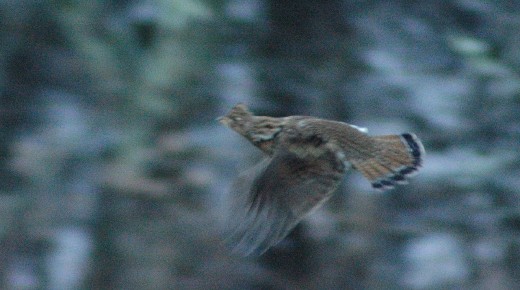
Flickers are most notorious as ant eaters!
So we recently visited my father in law in the boonies near Mountain Wisconsin. Purusing one of his bird books I was embarrassed to discover that what was rearing young in my backyard was not a grouse at all but a ...Yellowhammer, clape, gaffer woodpecker, harry-wicket, heigh-ho, wake-up, walk-up, wick-up, yarrup, and gawker bird... or more commonly known as the Yellow-shafted Flicker Colaptes auratus, a type of woodpecker.
Well I still don't know much about grouse! I believe they live more on the ground, I think my father in law said near wetlands. If they are the kind I've been confusing them with for years from Vilas county in northern Wisconsin, they are the bird that makes a loud "THUMP WOOMP" when they retreat down the trail or into another field as I mentioned previously.
The Flicker it turns out, is a fascinating bird, a member of the woodpecker family. There is a northern and a southern subspecies and a third that is extinct. Flickers are most notorious as ant eaters! Making up to 45% of their diet, and they sometimes use the acid from the ants, especially fire ants, to help clean off parasites while preening. They also eat fruits, nuts and bugs like beetles.The Flicker is a seriously overlooked asset in that it eats hordes of ants. I know many people that put poison on their lawns to try and cull the ant population. But by attracting Flickers, it would seem they have a better chance at getting rid of most of the ants in a more natural way. There are plans out there on the world wide web and other places, for building flicker nesting boxes!
It's been a few weeks now of trying to get a photo of this bird for Hubpages alas, nothing! I thought maybe I spooked the avian ant predator away for good but I still spot him (or her?) every few days. Recently I thought another moved in, but after some guessing with old school friends I discovered that we have a crested flycatcher also living nearby. I've also discovered a few more hollows in several other snags. Just one more reason to love dead trees, they offer a lot to nature lovers. More on this later, I plan on writing about the virtues of leaving a few dead trees on your property in an upcoming article.
Here's the grouse that turned out to be a mother flicker
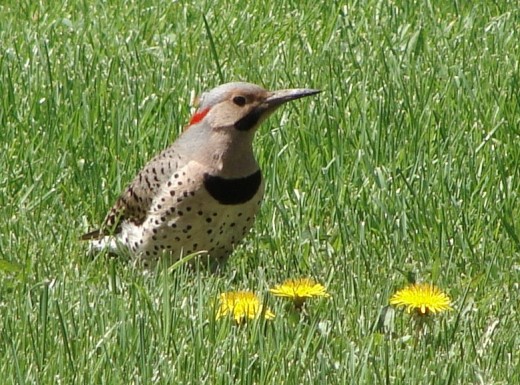
Here's a view of the snag that is home to the mother flicker
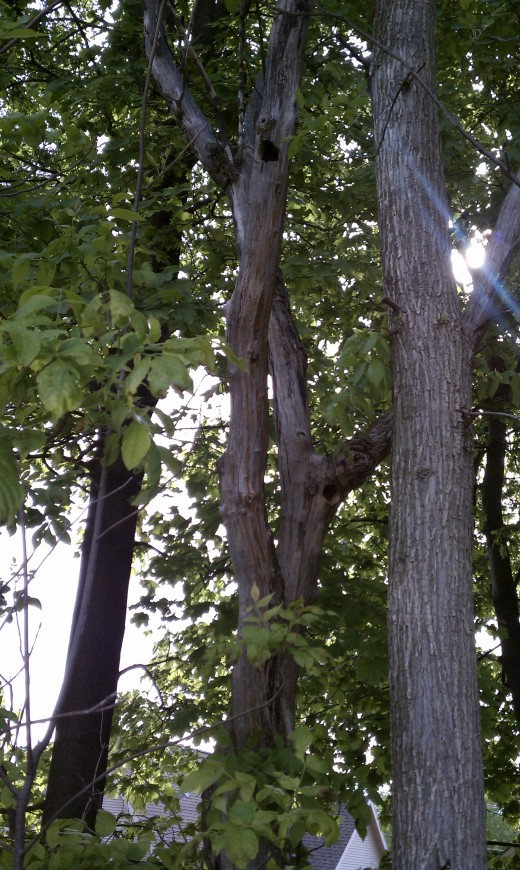
So the Grouse, that turned out to be a mother flicker still evades us. I have that much more respect for nature photogs that have to sit in stands for weeks at a time to get a glimpse of some rare species, it's not easy! I will have to borrow some images of the birds to post here, but I will post my pics of empty nesting holes! It's been a great summer so far, discovering these avian characters nesting in the back yard in bewteen gaggles of robins and little armies of chipmunks.
The hunt continues
Well it takes a few seconds to turn on my Android, scroll to camera, then wait for the camera to load, then try and capture an image of a bird that only stays still for about two seconds! But we'll keep trying! If it's the last thing I do, I'll shoot this MOTHER FLICKER!
More hubpage articles by Ben Zoltak and other mother flickers...
- Attracting Wild Turkeys, Quail, Pheasant, and Grouse
Whether you want to watch them or hunt them, attracting gallinaceous birds - turkey, pheasant, quail, and grouse - to your yard or acreage is surprisingly easy. Gallinaceous birds need relatively large... - The Northern Flicker Bird: Creator of Homes for Othe...
IIf while hiking, you disturb a ground-feeding woodpecker that vanishes in a flurry of auburn wings, you have met a Northern Flicker. Unlike other Woodpeckers, the Flicker primarily feeds on insects , using... - Information About The Most Endangered Tortoise And T...
After writing the article, 10 Reasons Not To Buy A Pet Turtle Or Tortoise I was asked by a reader to write an article about the names of the most endangered tortoise species. While I could compile a list, it...

